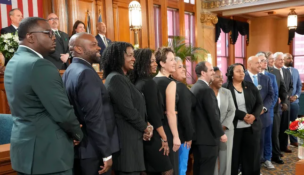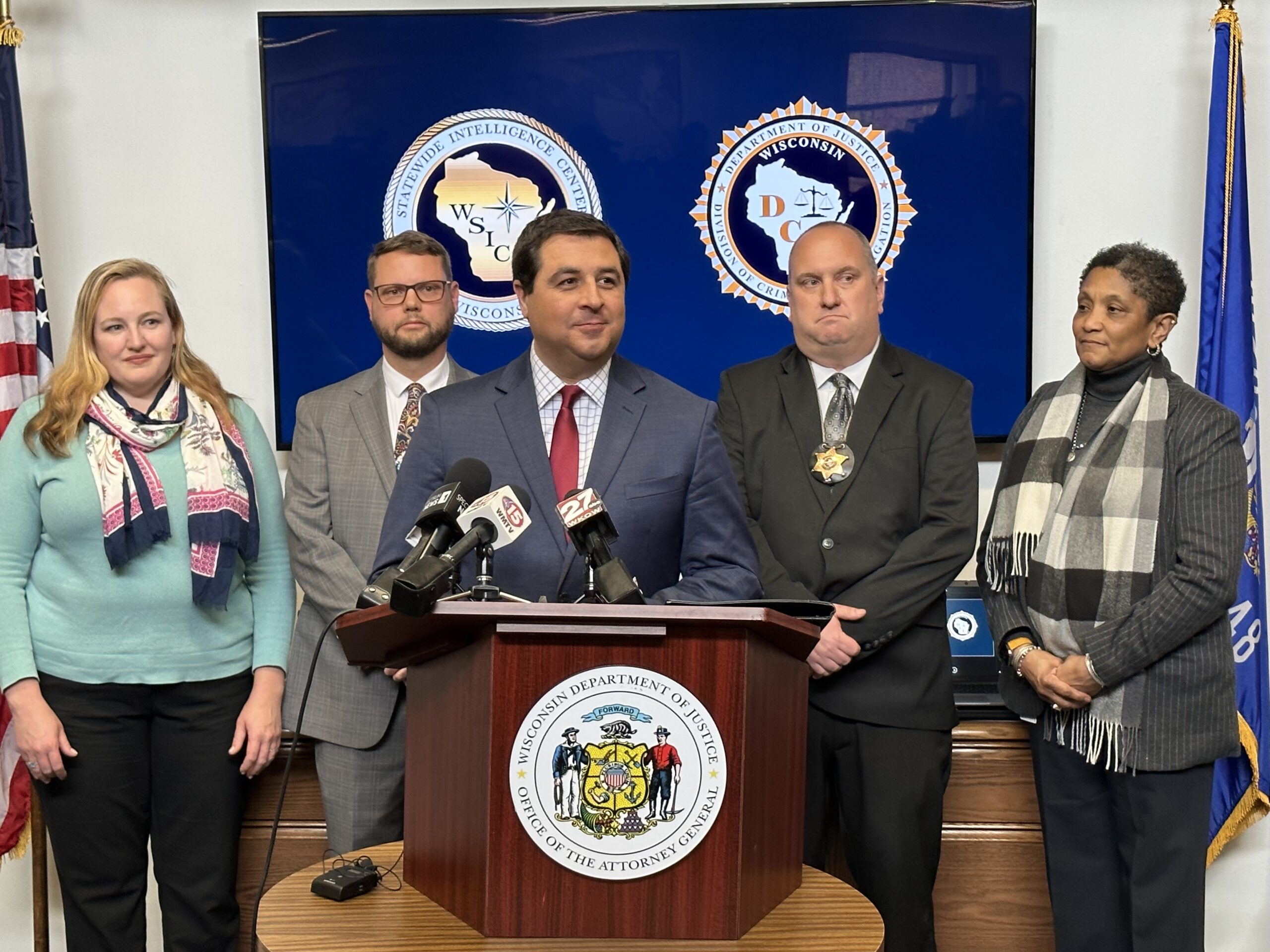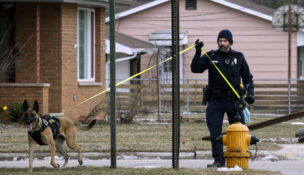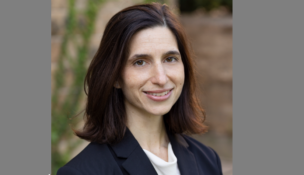Navigating kids’ court
By: dmc-admin//December 8, 2008//
 Attorneys and court officials working out at the Milwaukee Children’s Court Center are quick to note that in addition to being a separate physical location from the county’s main courthouse, the center has some very significant differences in the way that it operates.
Attorneys and court officials working out at the Milwaukee Children’s Court Center are quick to note that in addition to being a separate physical location from the county’s main courthouse, the center has some very significant differences in the way that it operates.
Because the cases involve juveniles, only participants in a particular case are allowed in the courtroom at a given time. The bustling waiting area and hallways ring with the sound of courts calling cases or attorneys through the overhead speakers.
In terms of differences, Presiding Judge Mary Triggiano pointed to the heavy caseload handled by the Children’s Division and the tight timetables assigned by law for dealing with the unique issues related to juveniles.
According to the most recent figures available from the Milwaukee County Clerk of Court’s office, the Children’s Division disposed of 6,724 cases in 2007, including 2,609 delinquency cases, 1,342 child in need of protection and services (CHIPS) cases, 339 termination of parental rights (TPR) cases and 1,102 guardianship cases.
Be Prepared
Given that judges often have to get through cases in 15 to 20 minutes, Triggiano said, preparation is a key factor for lawyers handling cases at the Children’s Court Center.
Another important element is having a strong understanding of the strict state and federal timelines for handling cases involving child welfare and juvenile justice.
“I think all the judges would say because of the volume of cases, the attorneys really need to know their clients and know their cases when they come into the courtroom,” Triggiano said.
Duke Lehto, a veteran Children’s Court attorney, also noted how challenging it can be for a new attorney to get used to having multiple participants in one case. He described a court setting where an attorney could appear with multiple attorneys, along with a guardian ad litem (GAL), district attorney, or other interested participants.
“For an attorney who comes from outside and is used to a one-, two-, or three-attorney situation, this is totally different,” Lehto said.
Communication Is Key
Because of the potential for many different participants in one case, Lehto said, “communication is essential.” Attorneys have to take time to talk with their clients, the case manager, assistant district attorney, and other participants prior to appearing in court.
When it comes to handling cases at Children’s Court, Lehto noted that patience is an important attribute when dealing with the high-volume courts.
“A lot of attorneys are not used to having a case assigned at 9 or 9:30 and sitting there until 10 a.m.,” he said.
David Zerwick, who heads the State Public Defender’s office at Children’s Court, also stressed communication as one of the biggest challenges for new attorneys when dealing with cases involving juveniles.
Zerwick emphasized the importance of “learning how to talk to children. Making sure that you are being understood and that you understand them, that you are doing what your client wants.”
That can be even more challenging when a child makes decisions that a parent does not support, he continued. Attorneys need to make sure the parents realize that the child is the client, a revelation that upsets some parents.
Keeping Lists
Triggiano noted that many of the attorneys appearing at Children’s Court are regulars.
Often, they come from one of two lists of attorneys that the court maintains to handle cases — an intake list and a GAL list. Those lists help the courts find attorneys for children and parents who might not otherwise be able to find or afford them.
The intake list contains the names of 36 attorneys, who agree to take cases as the courts need attorneys. Lehto explained that each day, two attorneys from the list will spend the day at the Children’s Court Center, sitting in a room awaiting calls to take cases. On average they get four or five cases that they will handle to completion.
The court also maintains a list of 60 private attorneys who are qualified to serve as GALs.
Although Legal Aid Society of Milwaukee handles most of the GAL work at the Children’s Court Center, there are times when they cannot handle cases due to conflicts. The courts then turn to the outside attorneys GAL list when LAS cannot provide services.
Shelia Hill Roberts, chief staff attorney at LAS, said families sometimes get into cycles where one generation after another winds up involved in Children’s Court. Conflicts can arise if the agency represented a child’s parent when that individual was a child.
“We’ve seen cases come back where we represented adult parents when they were younger,” Roberts said. “That happens quite frequently because there’s a cycle, as adults grow up. They were in the system and they haven’t learned the proper parenting skills and we see them back in the system.”
She said that about 10 percent of the cases the agency deals with get handed over to private attorneys.
The two attorney lists are maintained for the courts by Liz Finn-Gorski, the judicial review coordinator, who updates them every other year. The new intake list that was revised last summer will take effect in January and run for two years. Finn-Gorski said the courts will review the GAL list starting this July and it will take effect in January 2010.
The courts are not the only ones who maintain lists of attorneys to take cases at the Children’s Court Center. The SPD keeps a list of attorneys to handle cases when conflicts arise for the agency or when there are overflow cases that need to be handled. Zerwick explained that conflicts can come up in cases with multiple defendants who are charged in the same offense, or when one of the agency’s clients is a witness against someone in a different offense.
The SPD’s list is maintained by the agency’s Assigned Counsel Division in Madison. Deb Smith heads up that division.
Lehto encouraged younger attorneys to take cases for the SPD as a way to gain experience at the Children’s Court Center and become familiar with the judges and the unique setting. Both Zerwick and Roberts indicated their doors are open to attorneys who are taking cases for them, but are unfamiliar with the terrain.
“If we can help somebody, we will,” Roberts said.
Legal News
- Milwaukee’s Common Council now has the most African Americans, women and openly LGBTQ members ever
- Office of School Safety Provides Behavioral and Threat Assessment Management Training Ahead of 25th Anniversary of Columbine Shooting
- Wisconsin Supreme Court to hear arguments in Democratic governor’s suit against GOP-led Legislature
- Lawsuit asks Wisconsin Supreme Court to strike down governor’s 400-year veto
- Wisconsin man pleads not guilty to neglect in disappearance of boy
- ACS Selects University of Wisconsin Law School’s Miriam Seifter for 2024 Ruth Bader Ginsburg Scholar Award
- People with disabilities sue in Wisconsin over lack of electronic absentee ballots
- Wisconsin Republicans ignore governor’s call to spend $125M to combat ‘forever chemicals’
- Native American voices are finally factoring into energy projects
- Steven Avery prosecutor Ken Kratz admits ‘mistakes were made’
- Colombian national extradited to Milwaukee faces International narcotics-trafficking conspiracy charge
- MPD: Milwaukee homicides down nearly 40 percent compared to last year
WLJ People
- Power 30 Personal Injury Attorneys – Russell Nicolet
- Power 30 Personal Injury Attorneys – Benjamin Nicolet
- Power 30 Personal Injury Attorneys – Dustin T. Woehl
- Power 30 Personal Injury Attorneys – Katherine Metzger
- Power 30 Personal Injury Attorneys – Joseph Ryan
- Power 30 Personal Injury Attorneys – James M. Ryan
- Power 30 Personal Injury Attorneys – Dana Wachs
- Power 30 Personal Injury Attorneys – Mark L. Thomsen
- Power 30 Personal Injury Attorneys – Matthew Lein
- Power 30 Personal Injury Attorneys – Jeffrey A. Pitman
- Power 30 Personal Injury Attorneys – William Pemberton
- Power 30 Personal Injury Attorneys – Howard S. Sicula











